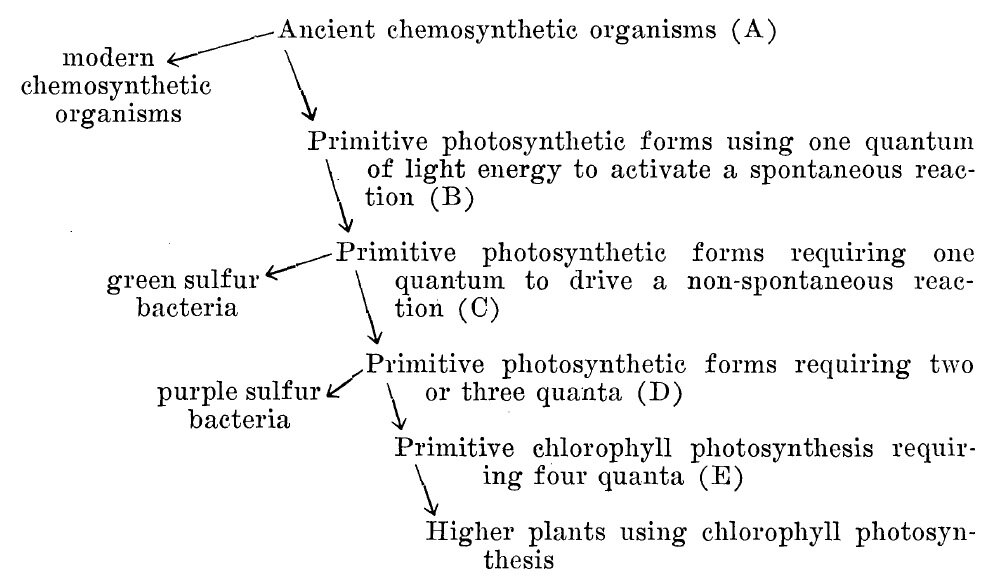Mini-lenses represent a groundbreaking leap in optical technology, crafted with precision to revolutionize how we interact with light in everyday devices. Developed under the guidance of Rob Devlin at Harvard, these remarkable devices utilize metasurfaces to manipulate light with great efficiency, paving the way for their integration into a myriad of consumer electronics. By replacing traditional bulk lenses, mini-lenses enable manufacturers to create slimmer, more sophisticated gadgets without compromising on functionality. Companies like Metalenz are already producing millions of these remarkable mini-lenses, demonstrating their versatility in applications ranging from smartphones to augmented reality. In just a few years, mini-lenses have emerged as a vital component in the evolution of light polarization technologies, showcasing the power of university-driven innovation in shaping entire industries.
The advent of compact optical elements, often referred to as micro-lenses or nano-optics, marks a significant shift in the manufacturing and design of imaging systems. These innovative optical components are engineered to focus and manipulate light with unprecedented accuracy, leveraging advanced fabrication techniques developed in academic laboratories. This technology is central to the development of metasurfaces, which offer enhanced performance for a variety of electronic applications, reflecting a new era in the field of optical engineering. As the integration of light-manipulating technologies continues to expand, the implications for consumer electronics and other industries are profound, signaling a trend toward more efficient and versatile optical solutions.
The Innovative Rise of Mini-Lenses
Rob Devlin’s journey from a graduate student at Harvard to the CEO of Metalenz highlights the transformative potential of innovation in optical technology. His work on mini-lenses revolutionizes how light is manipulated and directed, proving essential in modern consumer electronics. These miniature optical devices serve to replace traditional lenses, offering a more compact and efficient means to manage light polarization across various applications. As the demand for high-performance optical systems continues to grow, mini-lenses are setting new standards in design and functionality.
The advancement of mini-lenses is significant not just from a manufacturing perspective but also in terms of their integration into everyday technology. They allow manufacturers to create sleeker and more sophisticated devices by significantly reducing the physical space needed for optical components. This innovation is crucial for enhancing user experiences in smartphones, tablets, and AR/VR systems, where device thinness and lightweight designs are paramount. The success of Metalenz underscores a broader trend in the optical industry, where new technologies are challenging the status quo and opening pathways for future development.
Delving into Metasurfaces and Their Applications
Metasurfaces represent a significant leap forward in optical technologies, embodying the essence of what Rob Devlin and his team at Metalenz have focused on. These ultra-thin optical devices utilize intricate nanostructures that allow for precise control over light’s behavior, surpassing the limitations of conventional optics. With applications ranging from consumer electronics to advanced 3D sensing, the versatility of metasurfaces is becoming increasingly recognized. Their ability to manipulate light polarization specifically offers novel solutions for applications requiring enhanced security and imaging capabilities.
The success of the metasurfaces developed by Metalenz exemplifies the power of academic research and innovation in the real world. With partnerships with major companies like STMicroelectronics, Metalenz is integrating their technology into vital components such as the FlightSense module. This collaboration showcases the product’s ability to enable 3D sensing capabilities essential for facial recognition and augmented reality applications. As the technology matures, the potential for metasurfaces in various fields such as medical imaging and environmental monitoring further highlights their importance in optical technology.
Rob Devlin’s Vision for Optical Technology
Under Rob Devlin’s leadership, Metalenz is poised to redefine the future of optical technology. His vision extends beyond current applications, focusing on how the company’s innovations can be applied to different sectors, such as security and healthcare. With the development of Polar ID, the unique capabilities of light polarization are being harnessed to improve safety and technological efficiency across devices. This approach not only positions Metalenz as a leader in the optical field but also emphasizes the potential benefits of integrating advanced sciences into everyday technology.
Moreover, Devlin’s recognition of competition in the optical space ensures that Metalenz remains at the forefront of innovation. By continually pushing boundaries and enhancing their products, they aim to meet the evolving needs of the tech industry. The dedication to researching and developing new applications from their highly regarded lab at Harvard gives the company an edge. As they explore new domains for metasurface applications, the synergy between academic research and commercial viability becomes a hallmark of their approach, potentially leading to transformative shifts in the tech landscape.
The Role of Research in Disruptive Innovations
The work emerging from the Capasso lab at Harvard represents a critical interface between academic research and commercial product applications. As Sam Liss pointed out, university research is not only about innovation; it is about creating entirely new industries. The application of Metalenz’s metasurfaces in consumer technology exemplifies how academic insights can translate into disruptive innovations that challenge existing optical technologies. This intersection enriches both the academic community and the marketplace, creating a dynamic environment where groundbreaking ideas can flourish.
Moreover, the story of Rob Devlin and Metalenz underscores the importance of commercializing scientific discoveries. As Metalenz enhances its operations and expands product offerings, the feedback from real-world usage informs further research and development. This cyclical relationship between research and application fosters an ecosystem where innovations can continuously evolve and adapt to meet user needs, ensuring that technological advancements remain relevant and impactful.
Commercial Variants of Optical Technology
Metalenz’s journey is characterized by its aim to transform specialized optical technology into commercially viable products. By leveraging the principles of metasurfaces, Rob Devlin and his team have developed a range of mini-lenses that not only perform on par with traditional lenses but also achieve a significant cost reduction. This strategic move allows small and medium-sized enterprises to incorporate advanced optical technology without incurring prohibitive expenses, democratizing access to high-quality optics across various industries.
Furthermore, the production methods employed by Metalenz reflect a shift towards scalable solutions in optical manufacturing. Utilizing existing semiconductor foundry resources allows for efficient mass production of metasurfaces. Such capabilities are crucial for meeting the demands of a rapidly evolving tech landscape, where speed and efficiency are vital. The anticipated proliferation of mini-lenses into various consumer electronic devices indicates a promising trend in optical technology, hinting at vast applications in augmented reality, enhanced imaging systems, and beyond.
The Future of Polarization Technology
Polarization technology is emerging as a critical component in advancing both security and performance in electronics. The Polar ID system developed by Metalenz showcases the unique ability of polarization meta lenses to enhance facial recognition technology by factoring in individual light signatures. This uniqueness provides an additional layer of verification that can significantly reduce the risk of spoofing in security applications, reshaping how biometric data is captured and verified.
Additionally, the potential applications of polarization technology extend beyond consumer electronics, with implications in medical diagnostics and environmental monitoring. For instance, the ability to differentiate between the polarization signatures of healthy and unhealthy skin could lead to earlier detections of skin cancer. As researchers and companies like Metalenz continue to innovate, it is evident that the future of polarization technology will pave the way for groundbreaking advancements in various sectors, addressing pressing challenges and enhancing the capabilities of modern technology.
Intersecting Academia with Industry
The collaboration between Harvard’s Capasso lab and startups like Metalenz illuminates the vital role that academic research plays in fostering innovation. Universities provide rich environments for scientific inquiry and exploration, often leading to fundamental breakthroughs that can revolutionize industries. The transition from theory to practice, as demonstrated through the development of mini-lenses and metasurfaces, illustrates how academic insights can empower startups to disrupt established markets and drive technological advancements.
By engaging in partnerships with industry leaders, these academic institutions can facilitate translation of research into practical applications. This dynamic interaction promotes a culture of innovation that not only benefits startups and investors but also creates educational opportunities for students. Thus, the integration of academia with industry not only drives economic growth but also enriches the educational landscape, preparing future generations for careers centered around technology and innovation.
Expanding Capabilities with Metasurface Technology
The scalability and versatility of metasurface technology allow for a broader spectrum of applications than traditional optics. These advancements enhance not only consumer products but also industrial sensors and imaging systems. The precision with which metasurfaces can manipulate light opens doors to novel functionalities and greater integration of optical systems within electronic devices, positioning them as indispensable components in next-gen technology.
As the technology matures, the ability to create customized metasurfaces tailored to specific applications becomes increasingly feasible. This addresses niche market needs that were previously unmet, allowing for rapid iteration and deployment of new optical solutions. The evolution of metasurfaces heralds a future where optical technology is seamlessly integrated into a vast array of products, from autonomous vehicles to smart home devices, thereby enhancing functionality and user experience across several industries.
Metalenz’s Vision for Future Innovations
Rob Devlin’s commitment to innovation at Metalenz reflects a vision that extends far beyond the current landscape of optical technology. With ongoing research and development, the company aims to continuously evolve its offerings in line with technological advancements and user expectations. This forward-thinking approach emphasizes the importance of staying ahead of the curve in a rapidly changing marketplace, ensuring that Metalenz remains a key player in the optical technology sphere.
Furthermore, the collaboration with the Capasso lab provides Metalenz with a unique competitive advantage. As new research findings emerge, Metalenz can adapt and apply these insights to refine their existing products and develop groundbreaking new applications. The synergy between scientific discovery and product development not only propels the company forward but also positions it as a leader in the optical industry, paving the way for transformative changes in how we interact with technology.
Frequently Asked Questions
What are mini-lenses and how do they work in optical technology?
Mini-lenses, also known as metasurfaces, are ultra-thin optical components that manipulate light at a microscopic level. Unlike traditional lenses made from bulky glass, mini-lenses utilize a flat surface embedded with tiny pillars or nanostructures that bend light. This innovative approach allows for smaller, lighter, and more efficient designs in devices such as smartphones, tablets, and cameras.
How are mini-lenses transforming consumer electronics?
Mini-lenses are revolutionizing consumer electronics by replacing conventional glass lenses, which are typically large and heavy. By using metasurfaces, devices can be made slimmer and more compact while incorporating advanced optical features such as 3D sensing, augmented reality, and improved camera capabilities. Companies like Metalenz are leading the charge in integrating mini-lenses into popular devices like the iPad and Samsung Galaxy S23 Ultra.
What is the significance of Rob Devlin’s work on mini-lenses at Harvard?
Rob Devlin’s research on mini-lenses during his Ph.D. at Harvard played a crucial role in the development of this groundbreaking optical technology. His work contributed to the creation of Metalenz, a startup that successfully mass-produces mini-lenses for widespread use in consumer products. This transition from academia to industry exemplifies how university research can lead to innovative solutions in real-world applications.
What advantages do mini-lenses have over traditional lenses?
Mini-lenses offer several advantages over traditional optics, including reduced size, lighter weight, and lower production costs. Their flat, simple design allows for easier integration into a variety of devices, making it possible to achieve advanced functionalities without the excess bulk associated with conventional curved lenses. This disruption in the optical industry opens new possibilities for device design and performance.
How do metasurfaces enable advanced optical functions like light polarization?
Metasurfaces can be engineered to control light in unique ways, including manipulation of light polarization. This function is significant for applications such as facial recognition and augmented reality, where understanding the unique polarization signature of objects can enhance security and functionality. For example, Metalenz’s Polar ID technology utilizes polarization to improve smartphone security while minimizing device size and cost.
What future developments are expected in mini-lens technology?
The future of mini-lens technology is promising, with ongoing research aimed at enhancing performance and developing new applications. Advancements in metasurfaces may facilitate innovations in diverse fields such as healthcare, environmental monitoring, and consumer electronics. Rob Devlin and the Metalenz team are continually working to leverage the unique properties of mini-lenses to create transformative solutions.
| Key Points | Details |
|---|---|
| Development of Mini-Lenses | Rob Devlin developed mini-lenses during his Ph.D. at Harvard, creating a novel device using tiny pillars to bend light. |
| Mass Production | Metalenz produces millions of mini-lenses for consumer electronics, reaching a demand for 100 million units. |
| Applications in Consumer Electronics | The mini-lenses are used in devices like iPads and the Samsung Galaxy S23 Ultra, showcased in a teardown analysis. |
| Research Background | Capasso’s research on metasurfaces began in 2007, leading to significant advancements and the eventual foundation of Metalenz in 2016. |
| Technological Advancements | Metalenz’s technology allows for smaller, more affordable lenses, revolutionizing optics in devices requiring compact designs. |
| Future Developments | Plans for Polar ID technology aim to enhance smartphone security while significantly reducing size and cost. |
| Market Competition | Metalenz acknowledges significant competition, but leverages its early applications and ongoing lab collaborations. |
Summary
Mini-lenses represent a significant technological advancement in optical devices, emerging from research at Harvard and quickly transitioning to consumer applications. Rob Devlin’s leadership at Metalenz has propelled these innovative mini-lenses into mainstream electronics, enhancing functionalities while reducing costs. As the market continues to evolve, the push for smaller, efficient optics integrated into devices becomes paramount, showcasing the potential of mini-lenses to revolutionize the consumer electronics industry.



